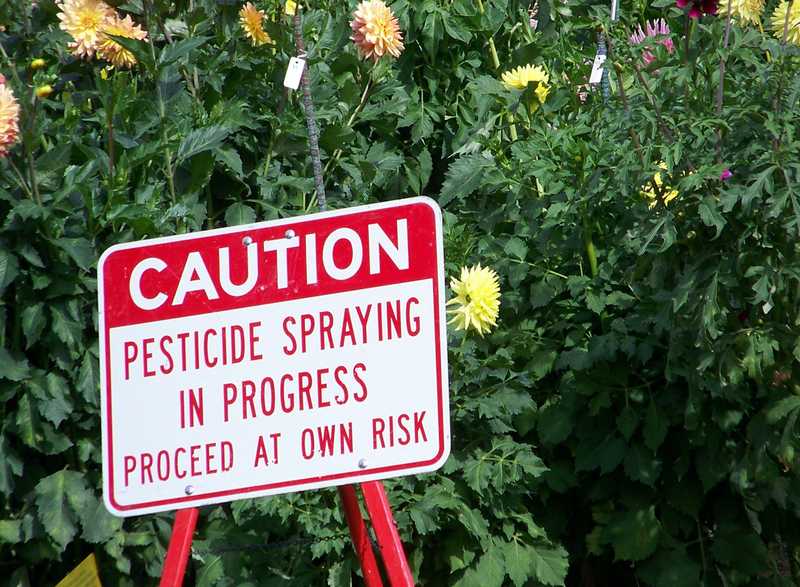Fines for marijuana companies caught using banned pesticides could reach $1 million per incident, according to a recent announcement by Health Canada. The government agency is instituting the fines as part of the lead-up to the legalization of non-medical marijuana. The severe nature of the penalties is meant to deter producers from using banned substances in their growing practices. Intended to make legal recreational marijuana safe, Health Canada’s decision was inspired by recent incidents that uncovered just how loosely regulated the use of banned pesticides were in medicinal cannabis.
Only 20 Pesticides Approved for Marijuana Production
As of Sept. 13, 2017, there are 20 pesticides approved by the Pest Management Regulatory Agency (PMRA) for use in cannabis production. Not on the list is the well-loved fungicide myclobutanil. It’s approved for use in food production but not marijuana, because it releases an extremely poisonous chemical compound called hydrogen cyanide when burned.
Since dry cannabis flower is one of the only forms allowed for legal distribution in Canada, it stands to reason that many consumers will be smoking their cannabis. So, there’s a risk of inhaling the hydrogen cyanide byproduct during the combustion that takes place when smoking. If ingested, hydrogen cyanide can interfere with the body’s use of oxygen, resulting in headaches, nausea, fainting, seizures and possible death.
3 Major Pesticide-Related Marijuana Recalls
- In December 2016 and January 2017, New Brunswick grower OrganiGram issued two voluntary recalls of marijuana sprayed with myclobutanil. An internal investigation led to "inconclusive" results, leaving marijuana patients lacking answers about how the pesticide got into their medicine.
- Aurora Cannabis, an Alberta-based licensed producer (LP) that purchased cannabis from OrganiGram to sell under their name, was the next to instigate a voluntarily recall of their marijuana four days after OrganiGram.
- In February, a former employee of Mettrum Ltd. came forward—following a marijuana recall that started in November 2016—claiming that the company had been spraying cannabis plants with myclobutanil as early as 2014. He also claimed that the LP hid the chemical above the ceiling when Health Canada came to conduct an inspection.
Canopy Growth Corp., Canada's most prominent LP, has since acquired Mettrum and says it has implemented the same testing and product safety procedures that exist at its other facilities.
Health Canada Admits Weak Cannabis Production Safety Rules
This run of incidents served as a cold shock to those who considered Canada's medical marijuana system to be tightly regulated. The revelation of these practices uncovered Health Canada's inadequate enforcement of proper testing and revealed a darker side of medical cannabis. The exposure set the government agency on a course more dedicated to product safety than ever.
Health Canada was forced to acknowledge that it hadn’t been testing medical cannabis for banned pesticides. The department stated that it would begin "random testing of cannabis products produced by licensed producers" to confirm that unsavoury products would not end up in legal marijuana; it later announced harsh penalties for non-compliance on banned pesticides.
3 More Cannabis Recalls Further Blemish Canada’s Medical Marijuana Program
In March of last year, Health Canada began collecting samples of plant leaves, dried cannabis and cannabis oil in a series of unannounced inspections of seven LPs. Three product recalls followed.
- An unannounced inspection of products from Ontario-based Peace Naturals showed piperonyl butoxide present in dried marijuana, cannabis oil and marijuana plants. Piperonyl butoxide is a synergist that’s combined with pesticides to increase their effectiveness. The LP’s voluntary product recall began May 18, 2017.
- A surprise inspection of products from Quebec-based Hydropothecary found low levels of myclobutanil in dried marijuana and marijuana plants. Hydropothecary gave in to a voluntary recall that began May 16, 2017.
- A sample of Broken Coast Cannabis Ltd. cannabis oil tested positive for myclobutanil and spinosad, resulting in further testing of products and the recall of three batches of cannabis flower starting Aug. 24, 2017.
Future Testing for Contaminants in Canada's Cannabis Supply
Health Canada now requires all LPs to conduct mandatory testing of all cannabis products for the presence of illegal pesticides, microbial bodies and chemical contaminants—mould, heavy metals, and bacterial and fungal contamination. Health Canada will continue to randomly test product samples during its regular and unannounced inspections of LPs to help ensure the safety of Canada's medical cannabis supply going forward.
To avoid the $1 million fine and the public scrutiny that would follow, some producers have already stepped up and voluntarily started having their product tested by independent labs. Only time will tell if Health Canada’s steep penalties will convince every LP to follow the rules when it comes to pesticides.
Photo credit: jetsandzeppelins
